The Tesla Model 3 has undeniably shaken up the automotive world. As a pioneer in the electric vehicle (EV) space, it has forced traditional carmakers to rethink their strategies and accelerate their own EV development. For many, mentioning electric cars immediately brings Tesla to mind, and the Model 3 is often the vehicle they picture. My friend, recently considering a company car upgrade within the family SUV category, initially dismissed EVs due to perceived range limitations for occasional long journeys. This common misconception highlights the need to address lingering doubts about EV capabilities, even in today’s market where many models comfortably exceed 300 miles on a single charge and can rapidly replenish at fast charging stations in about half an hour.
I suggested a couple of compelling EV options, steering clear of the Model Y for reasons I’ll elaborate on shortly, and then introduced the updated Tesla Model 3 into the conversation. While acknowledging Tesla’s remarkable achievements and disruptive influence on the car industry, I felt compelled to offer a slightly provocative perspective: “Owning a Tesla, especially a Model 3, might inadvertently signal that you’re not deeply invested in cars as a passion, and perhaps not the most skilled driver. It can, rightly or wrongly, project an image of someone who is perhaps a little…naive in car matters.”
My friend’s immediate reaction was insightful: “Oh, so Tesla drivers are becoming the new stereotype, like BMW and Audi drivers?” This observation sparked a moment of reflection, recalling a recent encounter with a Tesla driver who, exhibiting a lack of awareness for other road users, pulled out abruptly in front of me and then made a turn without signaling.
This isn’t to diminish Tesla’s accomplishments. Their rapid ascent and industry transformation are truly extraordinary. Tesla operates more like a technology company than a traditional automaker, and their customer base often leans towards tech enthusiasts rather than die-hard car aficionados. The refreshed Tesla Model 3 perfectly exemplifies this approach, pushing the boundaries of automotive convention even further. The previous Model 3 was already notable for its minimalist interior, dispensing with a traditional driver instrument cluster and centralizing all vehicle information, including speed, onto a prominent center screen.
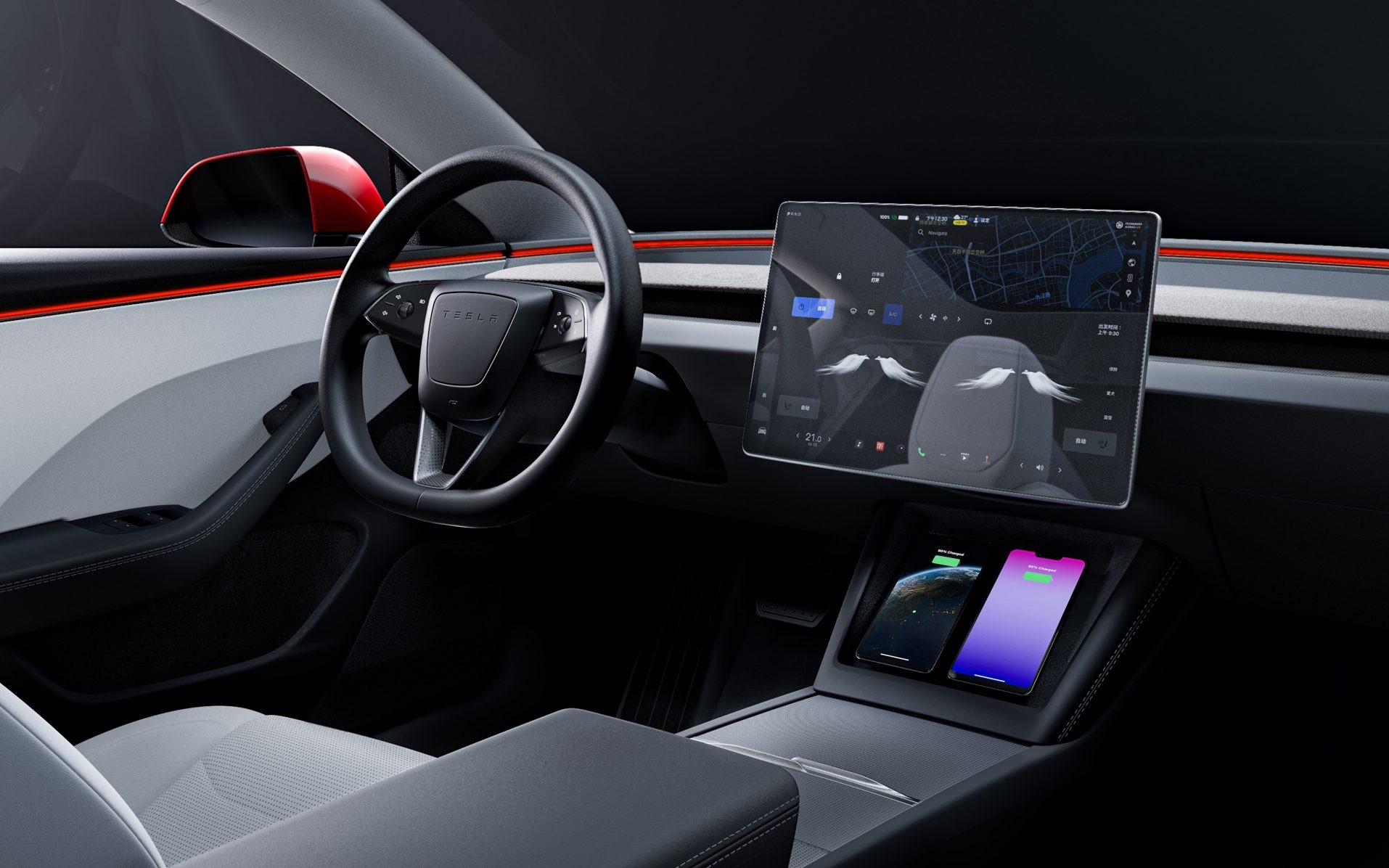 Tesla Model 3 dashboard and steering wheel
Tesla Model 3 dashboard and steering wheel
The updated Model 3 takes minimalism a step further by eliminating indicator stalks entirely. Turn signals are now activated via buttons integrated into the steering wheel. While this isn’t a novel concept – Ferrari has employed steering wheel-mounted controls for years – Tesla hasn’t addressed the inherent usability issue. Imagine navigating a roundabout; while turning right and needing to signal left for your exit, operating steering wheel buttons with crossed arms becomes unnecessarily awkward. This design choice might shed light on the behavior of the Tesla driver I encountered earlier.
Wiper controls have also migrated to the steering wheel, consolidated into a single button. A quick press initiates a single wipe, a long press activates the screen wash, and a touchscreen menu (identical in size to the previous model but now with a slimmer bezel) provides access to wiper speed adjustments. This reliance on touchscreen controls becomes particularly relevant given that the automatic wipers in my test car exhibited a hyperactivity rivaling Elon Musk’s late-night social media activity. Manual wiper speed adjustments, accessed through the touchscreen, proved far more effective for varying conditions, prompting me to question the optimal method for controlling such a fundamental function.
Similarly, adjusting the side mirrors also requires navigating through the touchscreen interface – a further departure from traditional physical controls.
Despite these unconventional control layouts, I personally didn’t find the absence of an instrument binnacle problematic. While some automotive journalists express strong opinions on this, I found it relatively easy to monitor my speed peripherally. However, I do concur with the calls for a head-up display. For a vehicle positioned as a premium offering, the lack of an optional head-up display projecting essential driving information onto the windshield is perplexing and feels like a missed opportunity to enhance both safety and driver convenience.
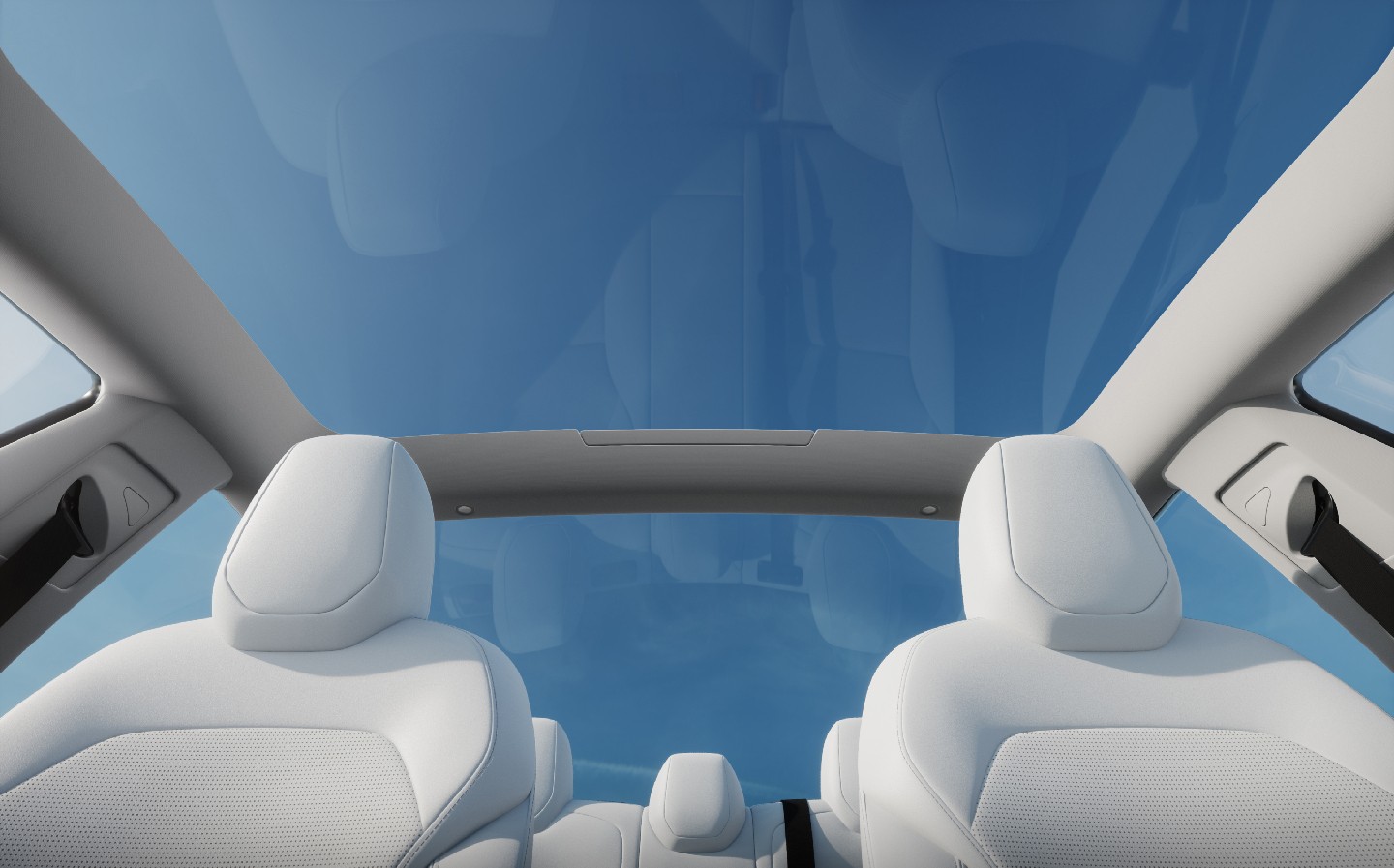 Tesla Model 3 panoramic glass roof
Tesla Model 3 panoramic glass roof
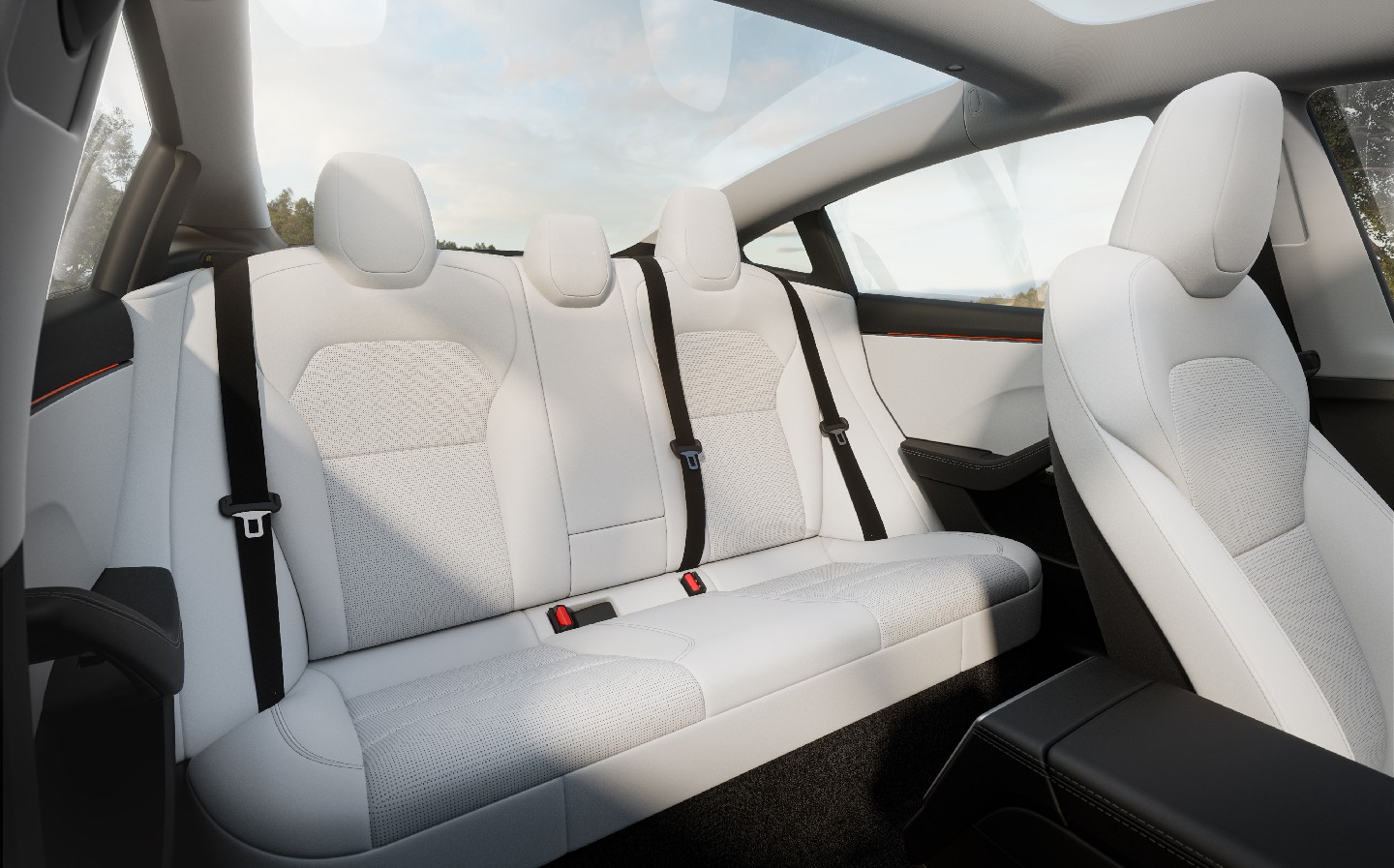 Tesla Model 3 rear seats
Tesla Model 3 rear seats
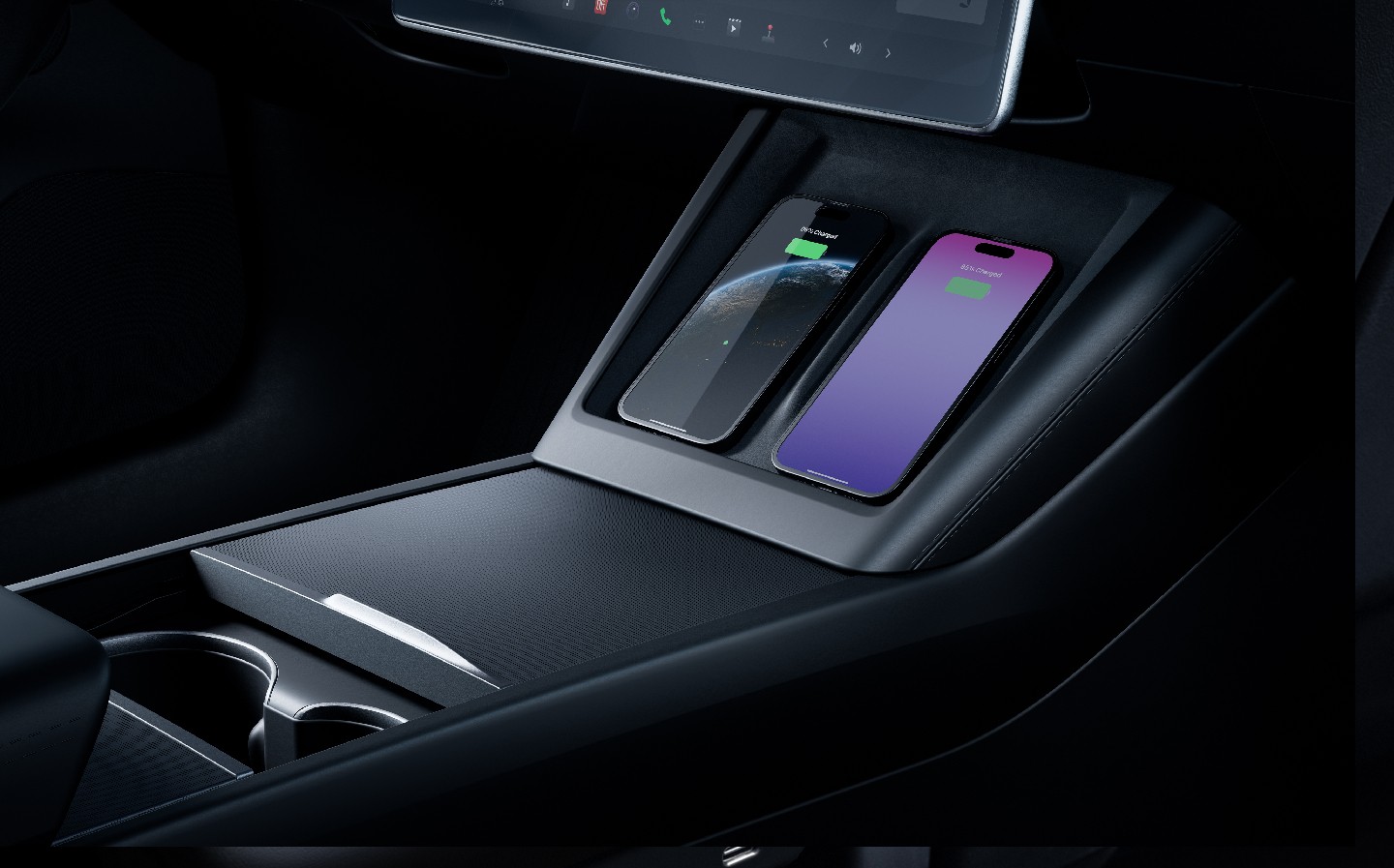 Tesla Model 3 phone charging pads
Tesla Model 3 phone charging pads
Another area of contention is the infotainment system’s limited smartphone integration. While Bluetooth connectivity for calls is standard and native apps for services like Spotify, Apple Music, and Tidal are included, neither Android Auto nor Apple CarPlay is supported. Tesla’s philosophy seemingly prioritizes its proprietary ecosystem, encouraging users to rely solely on built-in media players and navigation. While online forums suggest workarounds exist, they are not ideal solutions for seamless smartphone integration.
Furthermore, the Model 3 emits a somewhat undignified horn chirp when locking and unlocking – a detail that feels incongruous with a “premium” and “futuristic” vehicle. Ironically, this contrasts sharply with the inclusion of the “Emissions” app, a whimsical feature that plays various fart sounds. You can even configure the turn signals to emit these noises, a feature that amused my eight-year-old son immensely, though likely no one else.
On the topic of less-than-refined features, Tesla’s “Autopilot” driver assistance system, even in its basic form, proved to be more frustrating than helpful. While it effectively maintains lane position on highways and keeps a set distance from the car ahead, its lane-changing assistance is rudimentary. Indicating to overtake often results in Autopilot disengaging as it fails to recognize the intended gap, requiring manual intervention. Ultimately, I opted to deactivate it entirely.
Despite these criticisms, it’s crucial to emphasize that my overall impression of the Model 3 was far from negative. In fact, it excels in several key areas, and the updated version represents a significant improvement over its predecessor.
The exterior styling, for instance, is noticeably more refined. The previous Model 3’s front end had a somewhat ungainly “beetle-like” appearance, but the refresh has streamlined the design, eliminating unnecessary lines and incorporating sleeker, slimmer headlights. The rear has also been redesigned, integrating the taillights into the boot lid, resulting in a more cohesive and aesthetically pleasing overall design.
Practical improvements extend to the boot design. The updated Model 3 now features a drainage channel that prevents rainwater from flowing into the boot when the hatch is opened – a seemingly basic but previously overlooked detail, highlighting Tesla’s relative youth as a car manufacturer.
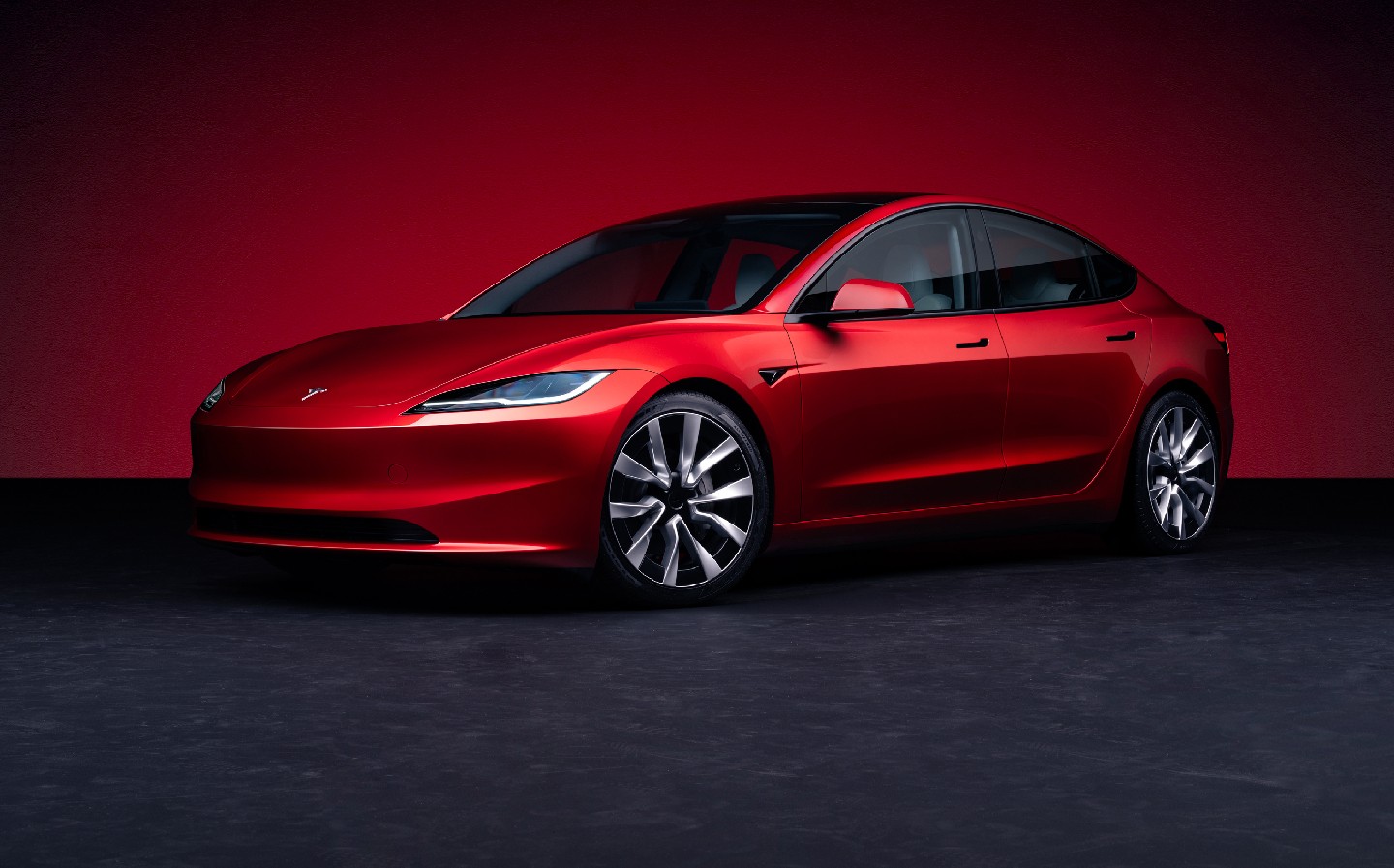 Tesla Model 3 studio image
Tesla Model 3 studio image
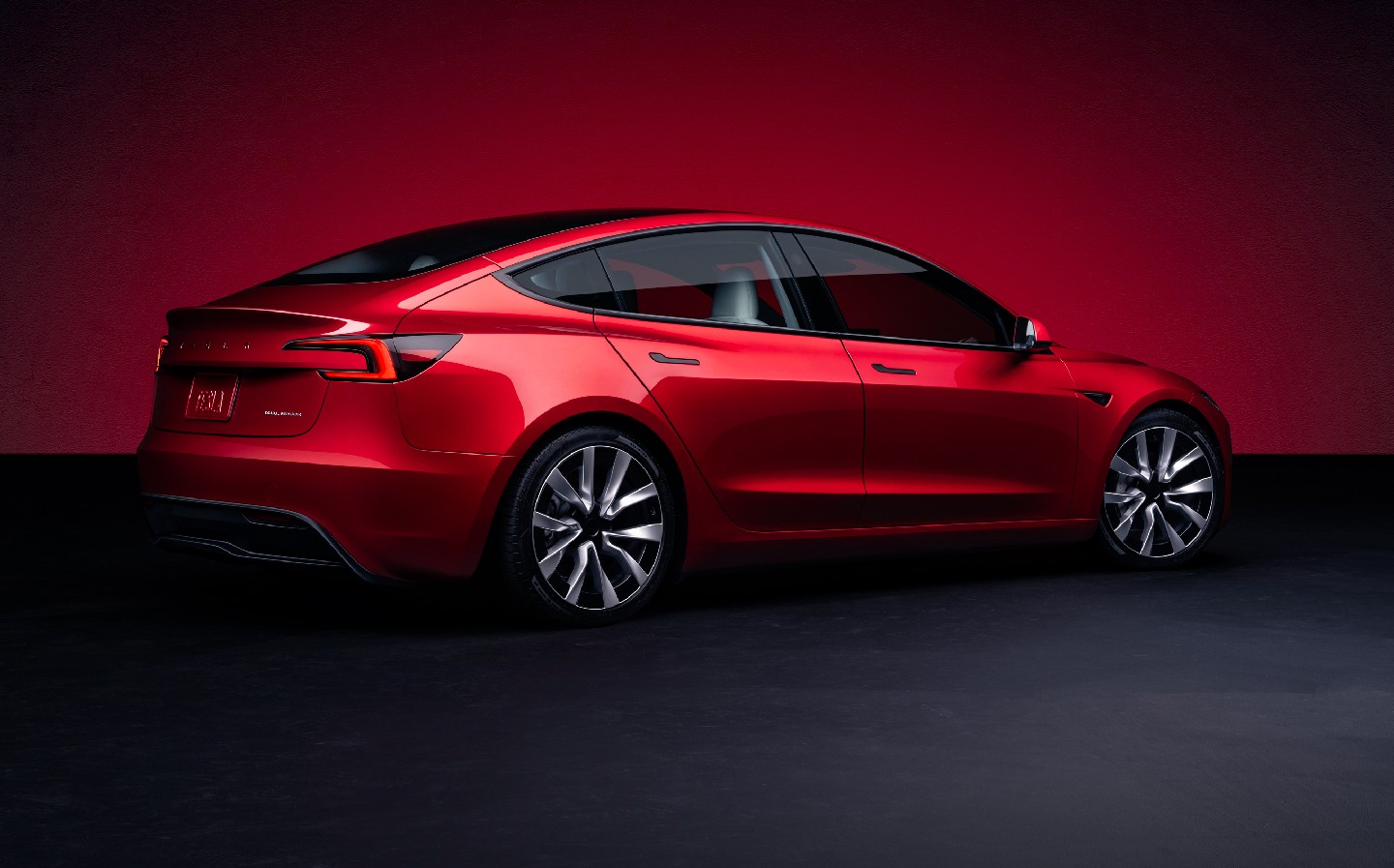 Tesla Model 3 studio image
Tesla Model 3 studio image
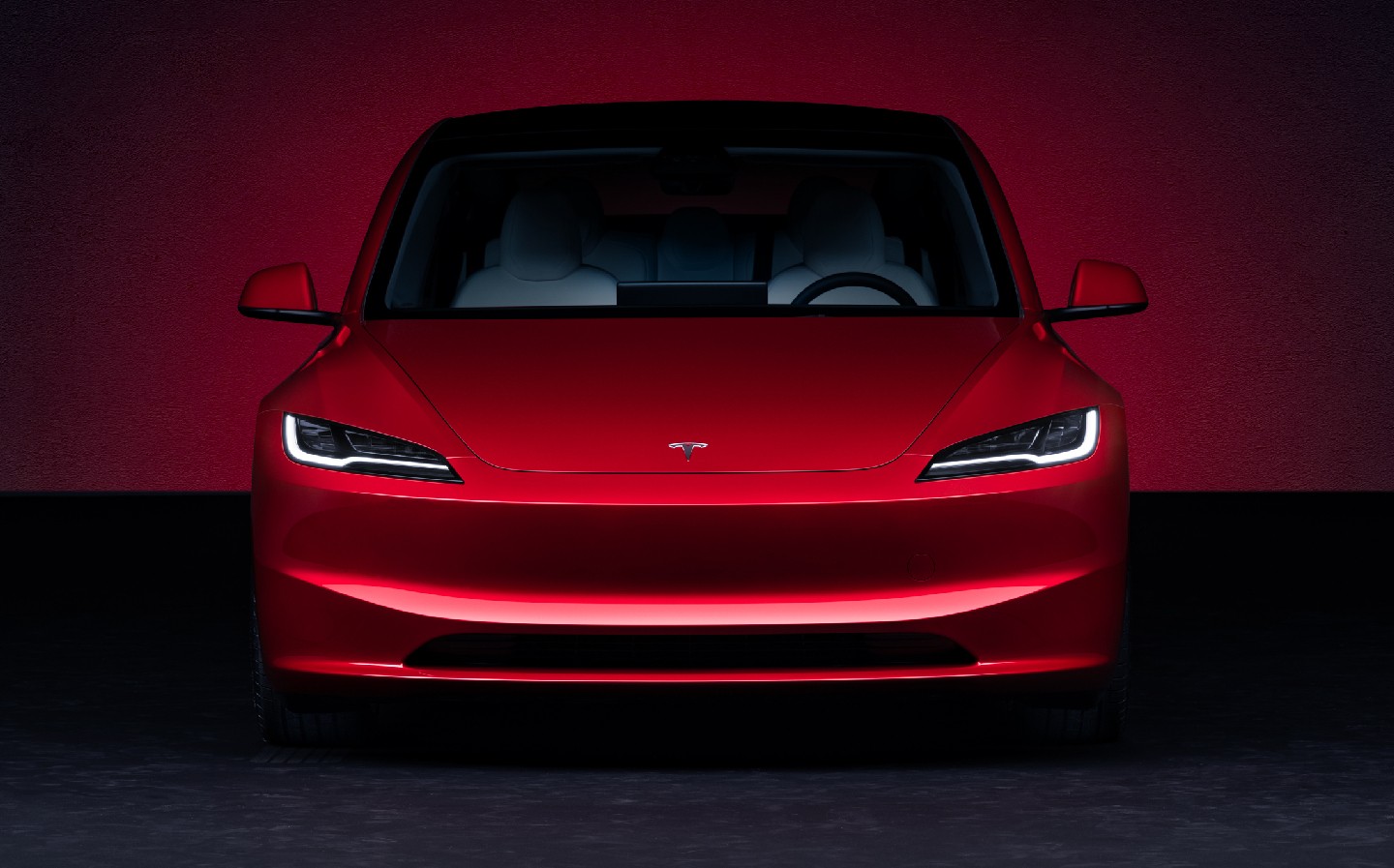 Tesla Model 3 studio image
Tesla Model 3 studio image
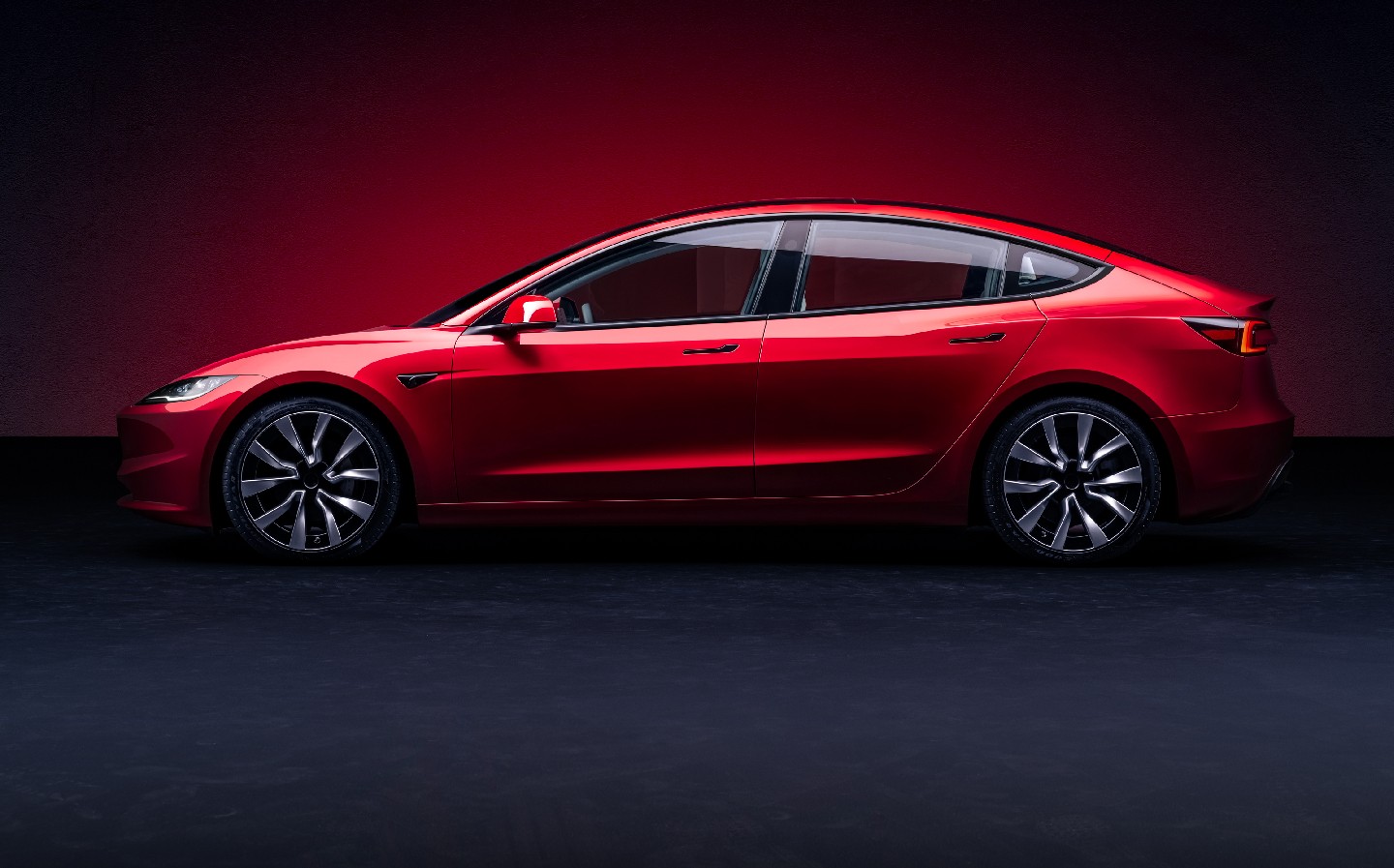 Tesla Model 3 studio image
Tesla Model 3 studio image
The wheels might appear slightly undersized, visually lost within the wheel arches, but this likely contributes to improved ride comfort – a point I’ll address further. Aerodynamic enhancements across the design have resulted in the Model 3 achieving Tesla’s lowest drag coefficient yet (0.219Cd), enhancing efficiency and extending range.
Performance options currently include “quick” and “very quick.” The rear-wheel-drive Model 3 accelerates from 0-60mph in a respectable 5.8 seconds – comparable to a mid-1990s BMW M3. The dual-motor Long Range variant significantly reduces this to 4.2 seconds, matching the pace of a Porsche 911 Carrera 4. A future Performance version, boasting sub-four-second 0-60mph times, seems highly probable.
Beyond sheer speed, the Model 3’s ride quality and handling deserve praise. The car feels responsive and agile, and the suspension strikes an excellent balance – comfortably compliant for everyday driving yet effectively controlling body roll when cornering. The steering is well-weighted, contributing to a sporty yet approachable driving experience.
While enjoyable on winding roads, the Model 3 is also well-suited for highway cruising. Road noise levels are generally low, reportedly reduced by up to 30% compared to the previous model. However, tire roar from the wheel arches remains noticeable in wet conditions.
Tesla’s extensive Supercharger network, with over 12,000 stations across Europe, is a major advantage. The Model 3 can gain up to 172 miles of range in as little as 15 minutes at these chargers, and rumors suggest even faster charging speeds are on the horizon with future Supercharger upgrades.
The official range figures are also impressive: 318 miles for the entry-level rear-wheel-drive version and a substantial 390 miles for the all-wheel-drive Long Range model I tested (though at a £10,000 premium, bringing the price to £49,990).
Real-world range accuracy depends on driving style and environmental factors, but the Model 3’s comprehensive energy data displays and range prediction gauges are remarkably accurate. My test car indicated a 300-mile range at the start of a journey, and after 91 miles of predominantly highway driving, it still projected 198 miles remaining, demonstrating both accurate estimation and impressive efficiency.
Another 54-mile trip yielded an average energy consumption of 181 watt-hours per mile, equivalent to 5.5 miles per kWh. Achieving over 4 miles per kWh for a car of this size is commendable; exceeding 5 miles per kWh is exceptional.
While some electric rivals may not quite match this efficiency, they are closing the gap in terms of range and price. The upcoming Polestar 4, for example, closely rivals the Model 3 Long Range in both aspects. Beyond Polestar, Tesla also faces increasing competition from Chinese manufacturers entering the market. The BYD Seal, for instance, starts at £45,695 and offers a claimed range of 354 miles.
However, a word of caution regarding Tesla’s pricing strategy. Tesla’s tendency to abruptly reduce prices in response to competitive pressures, particularly from lower-cost Chinese EVs, can negatively impact customer satisfaction and resale values. Buyers may find their newly purchased vehicle significantly cheaper just days later, and existing owners face depreciation concerns.
Furthermore, any Tesla price reduction can be readily matched by Chinese competitors. Recent reports highlight the aggressive pricing of Chinese EVs, with models like the BYD Dolphin costing the equivalent of £13,000 in China compared to a potential UK price of £25,000, suggesting a potential price war that could disadvantage Western automakers. This price disparity is partly attributed to substantial Chinese government subsidies for domestic EV production, exceeding even the reported subsidies that benefited Tesla.
Returning to the Model 3’s strengths, the infotainment system, despite its smartphone integration limitations and quirky sound effects, generally operates effectively. It is responsive and logically organized. The inclusion of games, such as a steering wheel-controlled off-road buggy racer, and creative apps like a sketchpad and a music creation tool (“Tracks”) add entertainment value, particularly for families.
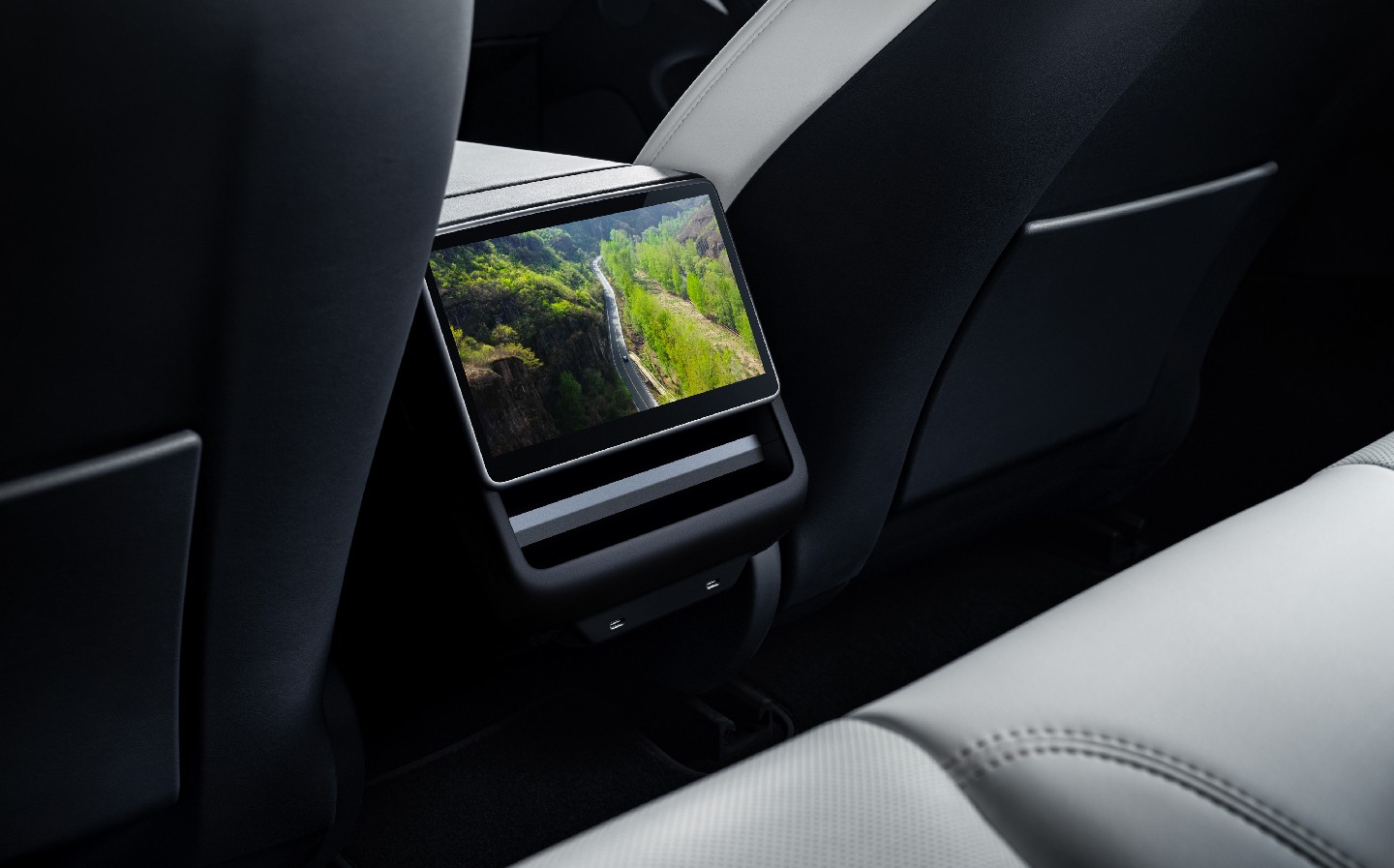 Tesla Model 3 rear screen
Tesla Model 3 rear screen
Rear passengers are also well-catered for with a new rear-seat entertainment screen. This screen not only allows climate control adjustments but also provides access to streaming services like Netflix, Disney+, Twitch, and YouTube. Bluetooth headphone connectivity further enhances the rear passenger experience.
Other positive aspects include a highly responsive mobile app, a minimalist yet appealing cabin with customizable LED lighting and trim panels, and a conveniently angled phone holder with wireless fast charging. The phone does tend to get warm during charging, however.
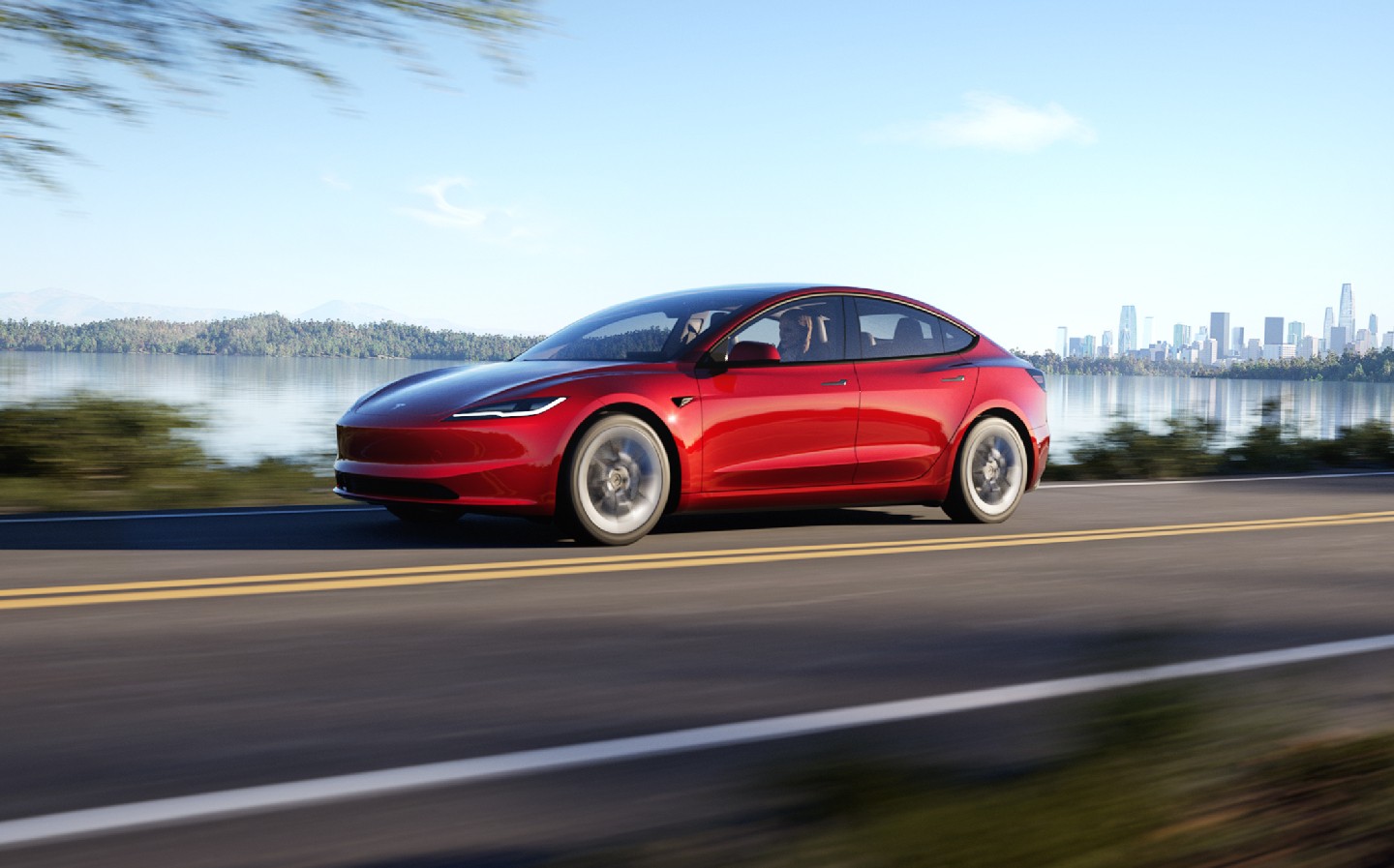 Tesla Model 3 driving
Tesla Model 3 driving
The Model 3 offers comfortable seats, a good driving position (albeit slightly high for a sedan), a surprisingly spacious boot with additional underfloor storage and front trunk space, heated rear seats, and ample USB-C ports throughout the cabin. The main drawback for rear passengers is the low seat base, which may cause discomfort for taller occupants due to a knees-up seating position.
In conclusion, the updated Model 3 is a significant improvement upon an already impressive vehicle. However, despite its numerous positive attributes, it might not sway those who are inherently resistant to the Tesla brand. For dedicated Tesla enthusiasts, the Model 3 remains the definitive choice. However, for those with a broader perspective, compelling alternatives such as the BMW i4, Polestar 2, and Kia EV6 warrant serious consideration.
As for my friend seeking company car advice? He has scheduled a test drive appointment at a Kia dealership to explore the new EV9.